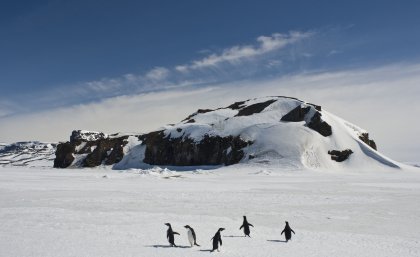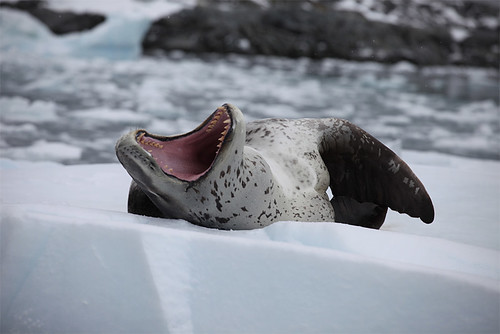 SWS.jpg?itok=8S8edH-f)
A University of Queensland scientist will brave ice, snow and five weeks sharing a two-man tent in an effort to learn more about dinosaurs during an expedition to Antarctica.
UQ School of Biological Sciences palaeontologist Dr Steve Salisbury will be among 12 scientists on an expedition running from 2 February to 24 March.
The seven palaeontologists, two sedimentologists, and three palaeontology graduate students will travel to the James Ross Island area— one of the few parts of Antarctica that has exposed rock during summer.
“We’re going down there to look for dinosaurs, but also other animals in Antarctica that may have existed towards the end of the Age of Dinosaurs,” Dr Salisbury said.
“Australia was connected to Antarctica right through the Age of Dinosaurs and beyond, up until about 40 million years ago.
UQ researcher’s icy dinosaur hunt from The University of Queensland on Vimeo.
“Antarctica holds the key to a lot of biogeographic problems that we’re trying unravel with regard to how dinosaurs and various other creatures ended up around the globe.”
Dr Salisbury said the team hoped to find new evidence that would indicate what dinosaurs may have existed in Australia, and how those already found in Australia might relate to their counterparts in Antarctica and other parts of once great southern supercontinent, Gondwana.
With a never-ending cycle of freezing and thawing, different areas are exposed each year, leaving potential for new discoveries.
“There could be skeletons exposed that weren’t seen before, that are just going to be sitting there on the ridges, I hope,” Dr Salisbury said.
“At first there will be a lot of walking around, kicking rocks, picking things up, looking for places to target and just systematically checking to see if anything new has appeared.”
The team has been preparing for the expedition since 2012, but significant sea ice over the past seasons has prevented their research ship from getting into the areas they need to target.
This time, the team will take two helicopters to ensure they can reach the areas they want to camp in unhindered.
“One of the biggest challenges is just getting there, and we don’t really know what we’re going to find, so you have to be prepared for everything,” Dr Salisbury said.
“We’ll have to bring a lot of specialist clothing, and we’ll have to set our camp up to be completely independent from the outside world for about four to five weeks.
“There’s a huge amount of logistics but I think that’s half the fun of operating somewhere like Antarctica.”
The expedition is supported by the National Science Foundation, the United States Antarctic Program and the Carnegie Museum of Natural History and includes scientists from the US, Australia, South Africa and the United Kingdom.
You can follow the team’s adventures via its blog or twitter account, @antarcticdinos.
Media: Dr Steve Salisbury, s.salisbury@uq.edu.au, +61 (0)7 3365 8548 or +61 (0)407 788 660; Katie Rowney, Katie.Rowney@uq.edu.au, +61 7 3365 3439.

.jpg)










